There’s nothing quite like putting on your favorite film in your home theater to relax at the end of the day. But sometimes you want to be able to enjoy that movie without disturbing the rest of your family. This is especially true if you are using your home theater for more than just movies. Your entire family probably doesn’t enjoy hearing you playing video games all night – nor do you want to hear your kids watching their favorite cartoon for the tenth time in a row. This is why it is important to know how to soundproof a home theater so everyone can watch their favorite films in peace. Soundproofing techniques can also help to improve your viewing experience by optimizing the sound quality of your speakers and reducing interruptions from outside noises.
A home theater is designed for your enjoyment to watch your favorite movies at any volume you want. But you do need to consider your family members and neighbors who may be easily disturbed by the audio from your home theater. Thankfully, creating a soundproof home theater room is easier than you may think – as long as you know what you’re doing.
If you want to know how to soundproof a home theater effectively, here are a few key tips.

How Sound Travels in a Home Theater
First, it is important to understand the basics of sound-wave travel. Noise frequencies travel as waves through the air. If these waves come into contact with a solid object (such as a wall), some of the noise will be absorbed, but others will pass through. Generally, lower (or bass) sound waves with a deeper frequency pass through solid objects.
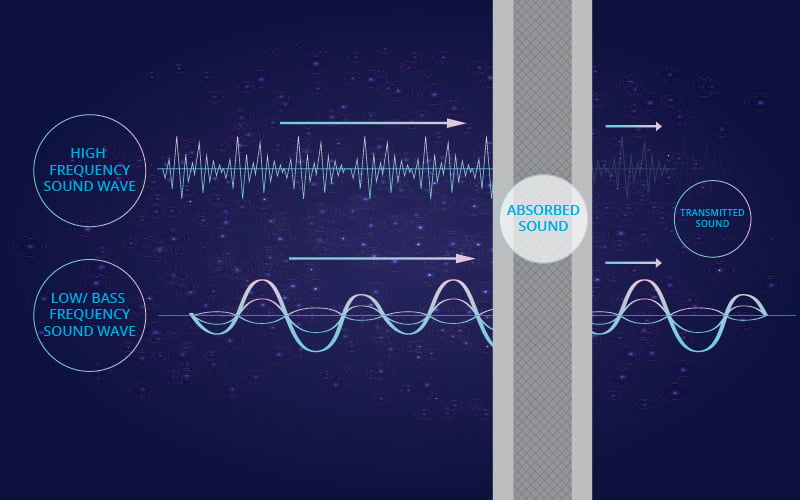
You will notice this if you are stopped next to a car whose radio is blasting. You may not be able to hear the words or melody clearly, but you can probably hear the deep bass tones loud and clear.
Sound waves are measured in decibels. If you purchase an audio system for your home theater, you may have a system with decibels that reach over 100. However, the typical drywall used in homes will only absorb up to 40 decibels. So, the sound will easily escape into the rest of the house if the volume is cranked up.
There are also two types of sound: airborne and structure-borne.
Airborne sound travels through the air until it reaches our ears. This includes the sound emitted from the home theater television or audio system.
Structure-borne sound is created from physical impacts, such as the sound of clapping or noise when you drop a heavy object on the ground. But structure-borne sound can also occur from the vibration of sound-waves passing through structures, such as air vents, walls, and windows. This may even create a high-pitched buzzing or a low hum like a bass vibrating.
To prevent both airborne and structure-borne sound-waves from escaping the home theater, you can utilize various soundproofing methods to capture them.
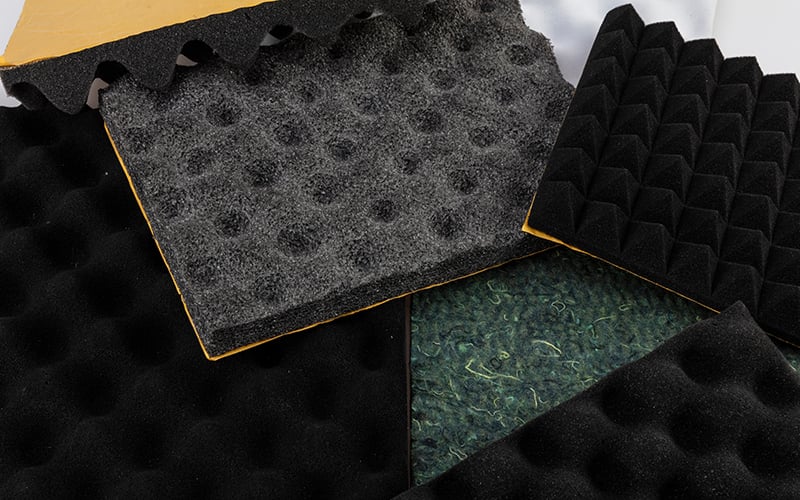
How Soundproofing Works
Soundproofing helps to stop sound-waves by blocking them with various types of materials that can absorb sound. Building a soundproof home theater room involves science, design know-how, and a bit of creativity.
If you are constructing a new home theater from scratch, things can be much easier. You can install sound dampening walls, soundproof insulation, or special home theater doors to block sound from escaping. But many soundproofing techniques can be installed after construction is completed as well.
Soundproofing materials can be added on various surfaces throughout the home theater to capture sound-waves and dampen the noise or block it altogether. The way to know if a material is going to be effective enough is by determining the STC rating.
What is an STC Rating?
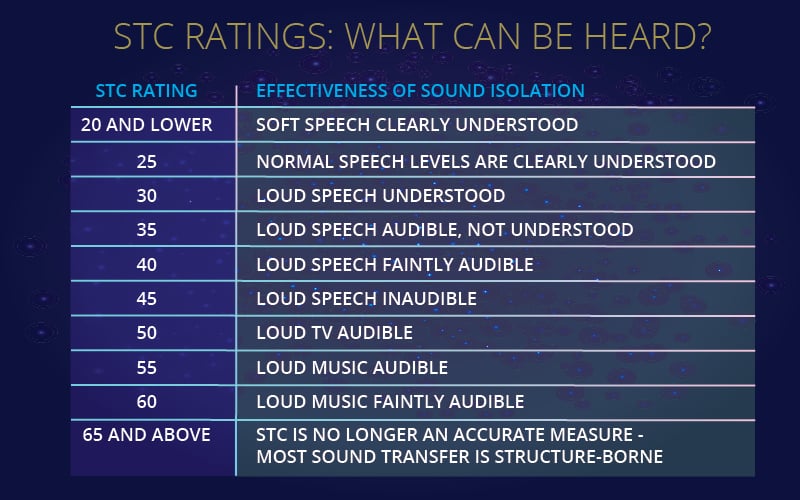
STC rating stands for the sound transmission class of a material. This number is determined through laboratory testing which measures how many decibels of sound is captured by the material.
Generally, the more material that sound passes through, the quieter it will be and the higher the STC. For instance, a thin, hollow wall has an STC of 44 whereas a wall that is 10’ thick and filled with grout has an STC of 60. To put this into a perspective, a normal talking voice’s STC will be around 50 STC and loud music is about 80.
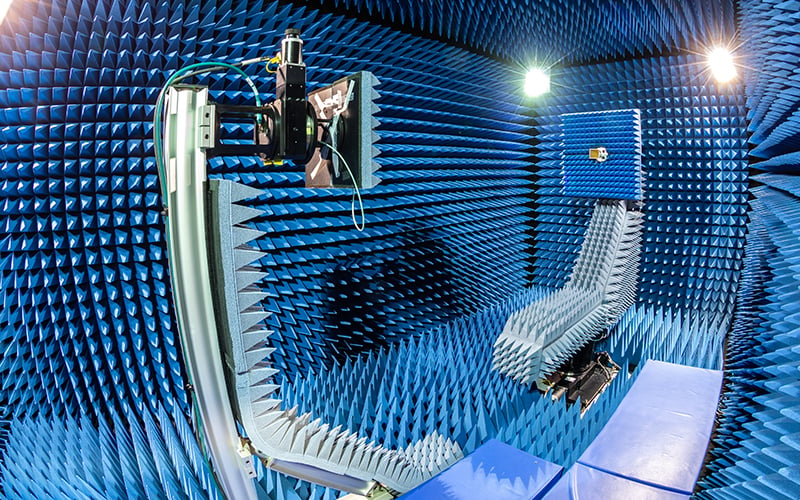
When you are looking for ways to soundproof a home theater room, it is recommended to use soundproofing methods with an STC rating of around 55-60. Having anything around 70-80 is considered to be top-notch and usually utilized for professional cinema spaces.
Types of Soundproofing
Several approaches can be used to soundproof a home theater. These methods can be used together in different forms and locations for even better soundproofing.
Absorption
Your first step to decreasing sound-waves from escaping is to fill in any cavities that will cause vibrations. This includes adding fiberglass or foam insulation into the walls to trap and muffle the sound. You can also add in soft fabric throughout the room with curtains and soft seating surfaces.
Blocking
Adding mass by using solid materials for home theater doors rather than hollow ones can help to stop sound from escaping. You can also add an extra layer of dray wall or using the heaviest 5/8” styles when constructing the room. Another option is to add a Mass Loaded Vinyl Sound Barrier between the insulation and drywall.
Damping
Damping involves using semi-solid materials that can decrease sound by slowing down the vibrations. One solution is to add acoustic panels throughout your home theater room to muffle sound-waves from bouncing or escaping. Another solution is to add home theater carpeting instead of a hard surface floor to dampen the sound.
Decoupling
Decoupling is considered to be one of the most effective soundproofing methods. This strategy involves carefully constructing walls to isolate the studs from interior walls. This may require some construction and renovations if you have already built your home theater. The drywall needs to be attached with decoupling mounts rather than typical studs.
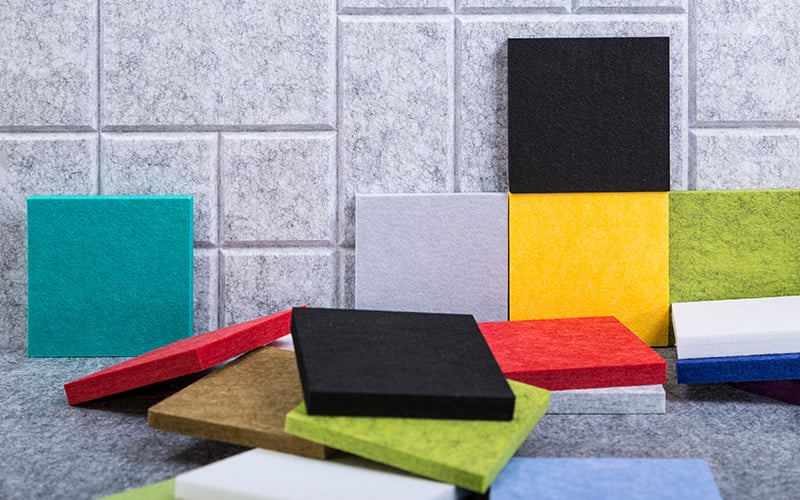
How to Soundproof a Home Theater the Right Way
When it comes to your home theater, you can try a combination of different soundproofing techniques and see what works best for you. There are different ways that you can design your theater’s layout along with little changes that can help to create a soundproof home theater room.
Windows
A lot of noise can escape from the windows in a room. The thin glass will not block out a lot of noise, but double pane windows are a bit more soundproof. You can also help reduce noise in a room by creating an air-tight seal around the frame with acoustic sealant and closed-cell foam slabs. Hanging up sound-damping curtains is another quick fix to help reduce noise from escaping.
Doors
It is highly recommended that you choose solid, dense home theater doors to prevent noise from escaping the room. You may also want to purchase a draft stopper to place at the bottom of the door while you watch a film to help muffle the noise that escapes from the gap underneath.
The Ceiling and Lights
You may not think about soundproofing your ceiling or lighting fixtures, but the sound could travel to the upper levels if your home theater is in the basement or first floor of your home. Adding additional insulation and decoupled joists to the studs is one way to reduce sound in the room.
Another tip is to use suspended light fixtures or low-profile fluorescents instead of recessed lights in the home theater. Built-in lighting fixtures require you to drill large holes in the ceiling, which creates more space for sound to escape. Instead, consider more subtle lighting options or wall-hung sconces.
Floors
Hard flooring surfaces such as wood, tile, or cement create a hard, reflective surface that sound-waves will bounce off of.
Instead, it is far better to use home theater carpeting to dampen sound. You can also install a thick, soundproof underlay beneath your carpet to provide even more soundproofing benefits. If you don’t want to install wall-to-wall carpeting, you can add in area rugs to reflective points or use soft rubber floor mats instead.
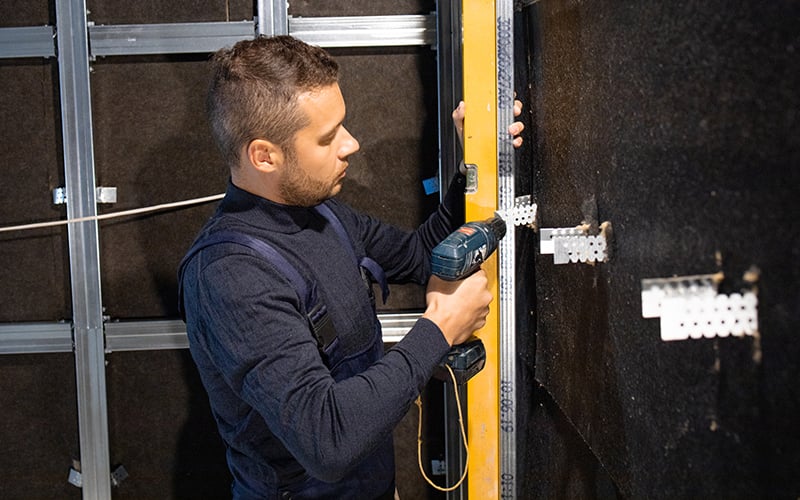
Best Insulation For Soundproofing
Some types of home theater sound insulation work better than others. Typically, the softer and more fibrous the insulation material is, the more soundproofing benefits it will offer. Foam insulation is considered to be the least effective as it hardly provides any soundproofing.
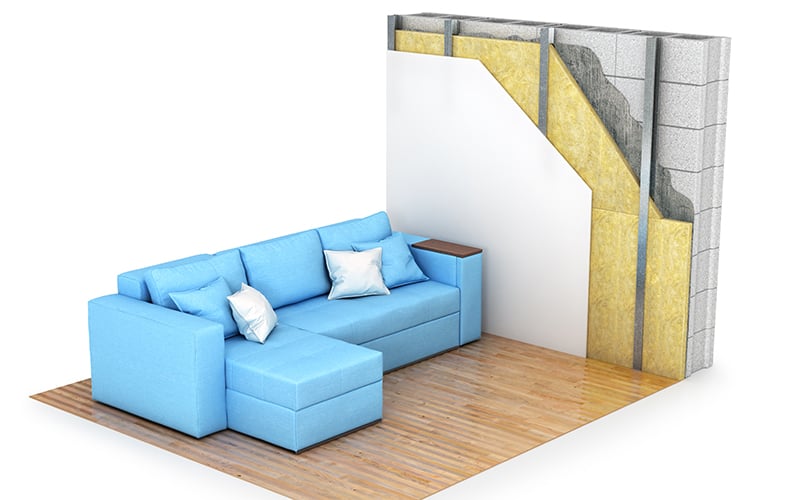
Some of the best insulation for soundproofing includes:
-
- Loosely Packed Fibers: This is best for high and mid-range frequency noise absorption but it will not block out low, bass tones effectively.
- Fiberglass Soundproofing: This is a common insulation material made of small glass fibers, sand, limestone, and soda ash. This helps to absorb sound with its highly fibrous design.
- Mineral Wool: This type of insulation is just as effective as fiberglass, but it is generally more expensive.
- Open-Cell Foams: Although foam insulation is not the best for soundproofing, open cell’s porous design makes it more effective at absorbing sound-waves.
How Much Does Soundproofing Cost?
Depending on the type of soundproofing techniques you use, you can get the job done with even the tightest of budgets. Installing acoustic panels throughout your home theater is one of the least expensive ways to soundproof, as you can purchase a pack of panels for under $20.
Adding in soft fabrics throughout your home theater can also help to reduce impact noise. Handing long, soft sound-damping curtains over windows, laying down rugs, and installing soft cushioned home theater seats will reduce the number of hard surfaces for sound-waves to bounce off of.
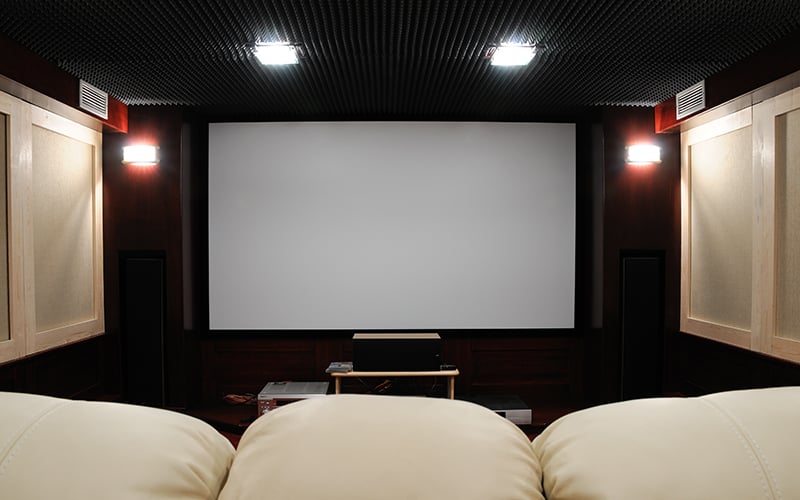
Insulating areas like the walls, ceiling, and windows can be a bit more expensive, especially if you need to renovate your home theater. Depending on the size of your room and the type of wall soundproof material you use, it could cost between $500 to $3,000 for the entire room.

FAQS
Can a room be completely soundproof?
While it is technically possible to create a soundproof room, it won’t happen for a home theater. You would need to suspend the floor and ceiling and install a lot of soundproofing materials to make it happen. There are plenty of ways to reduce sound in a room like a home theater, but you won’t be able to make it totally soundproof.

What are the advantages and disadvantages of a soundproofed room?
One of the greatest advantages of having a soundproof home theater room is that you can enjoy your movies in peace without disturbing your family members or neighbors. Soundproofing can also create an even better audio experience by helping to enclose the sound and reducing reverberation.
The disadvantage to soundproofing your home theater is the time, effort, and resources it takes to do the job right. You may need to hire contractors to install insulation into the theater walls. Additionally, if the wall soundproof material is not put in correctly, it will not be effective and you’ll have to do it all over again.
It is best to hire soundproofing professionals who specialize in wall soundproof material and other methods to handle the job.
Is soundproofing worth the money?

Although soundproofing a home theater does not necessarily increase its monetary value, there are numerous other benefits it can provide.
For instance, adding home theater insulation to the walls can help improve energy efficiency. Insulation helps to keep in hot or cooled air, so your HVAC system does not need to work as hard for temperature control.
Second, having a soundproof home theater can help you avoid noise complaints from neighbors for playing the TV too loud.
Does soundproofing work for noisy neighbors?
Yes, soundproofing doesn’t just keep sound in the room – it blocks out external noise, too. Having a soundproof home theater room means that you won’t be able to hear loud neighbors, street traffic, or other noises from outside the room either.
Conclusion
Learning how to soundproof a home theater is just one way to make this room even better. There are plenty of other ways to elevate your home theater by investing in top-notch technology and of course comfortable seating arrangements.
At Octane Seating, we specialize in home theater seating options that are designed to fit your style. We carry a wide variety of reclining, theater-style chairs that are as comfortable as they are beautiful.
Please reach out to our team to learn more about our home theater seating options and place your order today!

